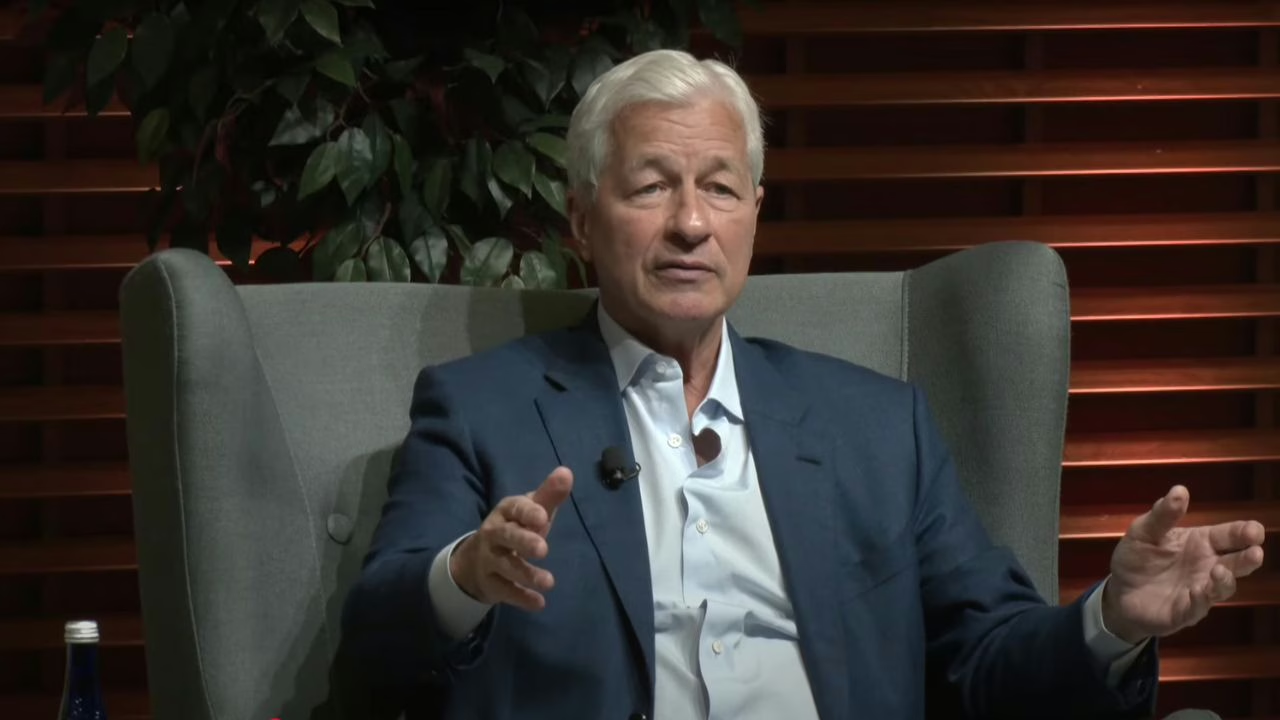In a world where economic landscapes shift rapidly, leadership in the banking industry requires a deep understanding of risks, regulations, and market dynamics. Jamie Dimon, Chairman and CEO of JP Morgan Chase, has long been a vocal and insightful leader in finance. In a recent discussion at the Stanford Graduate School of Business, he shared his perspectives on banking crises, government regulations, economic resilience, and the future of financial institutions. His insights provide valuable lessons not only for financial professionals but for leaders across industries.
Understanding Banking Crises: Lessons from 2023
Dimon reflected on the banking crisis of March 2023, where Silicon Valley Bank (SVB) and First Republic collapsed. He attributed these failures to two primary factors:
- Uninsured Deposits and Concentration Risk – SVB had a highly concentrated customer base—primarily venture capital firms and startups—who collectively withdrew their funds, triggering a bank run.
- Interest Rate Exposure – The rapid rise in interest rates from 0% to 5% significantly reduced the value of banks’ bond holdings, leading to massive unrealized losses.
He criticized regulators for their failure to anticipate these risks, arguing that better oversight and proactive adjustments to liquidity rules could have prevented the crises.
The Need for Stronger Risk Management
One of Dimon’s key takeaways was the importance of robust risk management. He noted that while regulations like capital requirements exist, they are not a cure-all for financial instability. Instead, he advocated for:
- Stress Testing Beyond Regulatory Mandates: JP Morgan Chase conducts 100 internal risk scenarios weekly, compared to the Federal Reserve’s single annual stress test.
- Scenario Planning: Banks should prepare for a range of economic outcomes, including recessions with high interest rates and inflationary pressures.
- Flexibility in Financial Institutions: He emphasized that banks must remain adaptable, ensuring they can support clients in good times and bad.
The Role of Regulation: A Double-Edged Sword
Dimon argued that while some regulations are necessary to maintain stability, excessive bureaucracy has made the financial system inefficient. He pointed out several regulatory flaws:
- Overlapping Agencies: Multiple regulators oversee the same financial sectors, leading to inefficiencies.
- Resolution and Recovery Plans: These are overly complex and ineffective in real crises.
- Capital vs. Liquidity Requirements: While capital rules are often debated, Dimon highlighted that liquidity—the ability to meet sudden demands for cash—is often a more pressing concern.
The Growth of Private Credit and the Decline of Public Markets
The shift from public to private markets was another major theme in Dimon’s discussion. He noted that the number of public companies in the U.S. has declined from 8,000 in the 1990s to about 4,000 today, while private equity has expanded dramatically. Reasons for this shift include:
- Regulatory Burdens: Public companies face extensive compliance costs and litigation risks.
- Private Credit Growth: Institutions like Blackstone and Apollo have capitalized on regulatory arbitrage, offering credit outside the traditional banking system.
Dimon questioned whether this trend is beneficial for market transparency and economic stability, urging policymakers to evaluate the long-term effects of shrinking public markets.
Consumer Protection and the Role of Banks
Discussing consumer protection, Dimon acknowledged the need for fair treatment but criticized the fragmented regulatory environment. He argued that banks are often unfairly targeted while more harmful financial practices occur outside the traditional banking system, such as payday lending and fraud on social media platforms.
Additionally, he highlighted the challenges posed by new financial technologies, noting that while competition is healthy, unregulated fintech firms may lack the consumer protections and fraud prevention capabilities that traditional banks provide.
The Future of AI in Banking
Artificial intelligence (AI) is poised to transform banking, and JP Morgan Chase is at the forefront of its adoption. Dimon described AI as “as big as the internet, electricity, or the steam engine,” predicting widespread job automation and efficiency improvements. JP Morgan already has:
- 2,000 employees working on AI projects
- 450+ AI use cases across fraud detection, risk management, customer service, and trading
- Large language models (LLMs) used by 200,000 employees to analyze financial trends and risk factors
Despite AI’s benefits, Dimon warned about the dangers of cybercrime, emphasizing the need for strong regulatory oversight without stifling innovation.
Geopolitical Risks and Economic Uncertainty
Beyond financial markets, Dimon expressed concerns about global geopolitical instability. He identified several major risks:
- U.S.-China Relations: Trade tensions and competition for technological dominance.
- Russia-Ukraine War: Economic and security implications for global markets.
- Middle East Tensions: Potential for disruptions in energy markets.
- Rising Government Debt: U.S. national debt is projected to exceed $50 trillion within the next decade, raising concerns about long-term economic sustainability.
Conclusion: Leadership in a Time of Change
Jamie Dimon’s discussion at Stanford provided a masterclass in leadership, risk management, and economic strategy. His key takeaways for businesses and policymakers include:
- Proactive Risk Management: Stress test for multiple scenarios, not just regulatory minimums.
- Smart Regulation: Avoid excessive bureaucracy that stifles economic growth.
- Embrace AI and Technology: Leverage innovation to improve efficiency and customer service.
- Understand Global Risks: Stay aware of geopolitical developments and their economic impact.
As the world continues to evolve, leaders must remain adaptable, forward-thinking, and prepared for uncertainty. Dimon’s approach serves as a blueprint for navigating complex financial and economic landscapes.


Leave a Reply